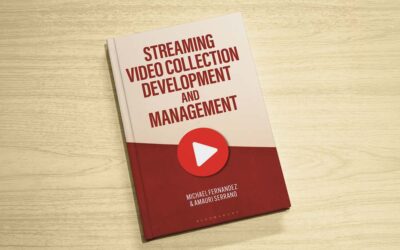Accessibility Tips and Resources for Librarians
Lauren Hays
When creating content for the web you want to ensure the material is accessible for individuals with a disability.
If you are like me, you did not have a class on accessible web design during your formal education. This is a topic I have had to learn about on my own. I want to share a few tips and provide a list of resources you can visit to learn more.
Tips
- Add alt text to images: This allows a screenreader to tell a person who cannot see an image what the image is.
- Use headings (i.e. <h1> etc.) on a web page when distinguishing between different parts of the page.
- Avoid linking the words “click here.” Instead, link descriptive text.
- Pay attention to colors and choose colors with a high contrast such as black font on a white background.
- Caption videos and provide a transcript for audio-only content such as a podcast.
- PDFs should be properly tagged.
- Check your content for accessibility issues before going live.
Resources
Chrome Accessibility Developer Tools: “This extension will add an Accessibility audit, and an Accessibility sidebar pane in the Elements tab, to the native Chrome Developer Tools.”
Creating Accessible PDFs: This content from Adobe explains how to create accessible PDFs.
Paciello Group Contrast Analyser: “This tool is a native app for Windows and Mac that will evaluate the color contrast of your website, and will also tell you if your site meets the WCAG 2.0 standards for color contrast.”
WAVE Web Accessibility Evaluation Tool: “WAVE® is a suite of evaluation tools that helps authors make their web content more accessible to individuals with disabilities.”
WebAIM: Web Accessibility in Mind: “WebAIM (Web Accessibility In Mind) has provided comprehensive web accessibility solutions since 1999. These years of experience have made WebAIM one of the leading providers of web accessibility expertise internationally. WebAIM is a non-profit organization based at the Institute for Disability Research, Policy, and Practice at Utah State University.”
The W3C Web Accessibility Initiative: “The W3C Web Accessibility Initiative (WAI) develops standards and support materials to help you understand and implement accessibility.”
This is certainly not an exhaustive list of tips or resources, but I hope they are useful and give you a place to start exploring the topic of accessibility in more detail.
Lauren Hays
Lauren Hays, PhD, is an Assistant Professor of Instructional Technology at the University of Central Missouri, and a frequent presenter on topics related to libraries and librarianship. Her expertise includes information literacy, educational technology, and library and information science education. Please read Lauren’s other posts relevant to special librarians. And take a look at Lucidea’s powerful integrated library systems, SydneyEnterprise, and GeniePlus used daily by innovative special librarians in libraries of all types, sizes and budgets.
Never miss another post. Subscribe today!
Similar Posts
Growing Your Leadership Skills: 7 Tips for Special Librarians
Great library leaders aren’t born—they’re made through learning self-reflection and practice. Here are seven strategies to help you grow and lead with impact.
Keeping Up with Copyright and Generative AI: What Special Librarians Need to Know
As generative AI becomes more prevalent copyright law is evolving to address its impact. A new report from the U.S. Copyright Office provides guidance on what is (and isn’t) copyrightable.
Understanding Shadow AI: Risks Costs and Governance
AI can enhance search discovery and efficiency but unsanctioned adoption—known as “shadow AI”—can lead to budget overruns and compliance risks. Here’s how to evaluate AI pricing models and build a governance strategy that balances innovation with cost control.
Interview with an Author: Fernandez on Streaming Video Collection Development
As demand for streaming video in libraries grows so do the challenges of managing access budgets and licensing. Co-author Michael Fernandez shares key insights from his book “Streaming Video Collection Development and Management”.






Leave a Comment
Comments are reviewed and must adhere to our comments policy.
0 Comments